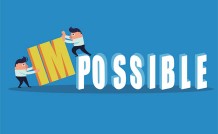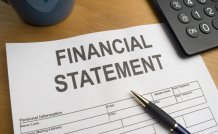Online Class: Understanding and Managing Your Personal Credit

no certificate
with CEU Certificate*
-
15Lessons
-
31Exams &
Assignments -
5Hours
average time -
0.5CEUs
Course Description
Credit governs everyone's lives. It is what allows people to buy a house, get a car, have a credit card and generally live a life they cannot really afford. Sadly, many people get into a debt spiral that soon goes out of control. They have trouble keeping their head above water, and soon they fall under as the weight of debt drags them down.
Thankfully, credit can be managed and all it takes is having the ability to change how one lives their life. By implementing the lessons explained in this course, an individual will be able to take their credit and repair it.
This is not to say that it will be easy. If anything, it will be very difficult to do. They will be struggling to keep their head above water, but as they persevere, they will be able to slowly fix their credit and get credit relief.
The statistics are staggering with how many people suffer from credit problems. Millions, with that number growing because of the economy, are actually using credit to keep their heads above water. This is a losing strategy that only results in them losing nearly everything they have as the water quickly pulls them under and the debt rock shows no signs of letting go.
There are many ways that a person can get rid of debt, and they are covered in this course. These include:
- Understanding Credit
- Understanding a credit score
- Understanding how credit is affected
- Understanding Credit Cards
- Understanding Foreclosure
- Understanding Bankruptcy
- Understanding the Debt to Income Ratio
- Understanding the Debt Spiral
- Finding Debt Counseling
- Finding Debt Consolidation
- Learning to live within one's means
- Learning how to budget
- Knowing how to stay on track
- Understanding Credit Reports
- Fixing Credit Errors
These must be done right, and cannot be rushed. To get out of debt and realize credit relief, one has to work hard to do so. This course will explain how to repair credit using the tips that have helped millions of other people raise their credit score hundreds of points through know-how and determination.
Course Motivation
So, what exactly is credit and how did it become something that we all use and need throughout our day-to-day lives?
Essentially, credit is the granting of a loan from one party to another, where the second party is not required to reimburse the first party in full immediately, but can repay over a certain set period of time. This is debt, and it affects nearly everyone in the Western world. The first party is always referred to as the creditor or lender, while the second party is the debtor or borrower. Like a relationship between certain fish and sharks, or birds and crocodiles, these two need each other. The lender needs to have someone to lend to, or they cease to exist, so the debtor is their other half, their Yang to the Yin. You probably get the idea.
Typically, any large movement of financial capital is dependent on credit, and this becomes dependent on the reputation of the individual for how much credit they are allowed to borrow, often called creditworthiness.
Credit has become a huge part of our lives and it is actually very hard to get away from it. Many companies these days will offer credit to their customers as part of a purchase agreement. It is rare these days, when you make a payment at the till, that you are not asked if you want to get the company's credit card for cheaper purchases. Many choose to go with these store credit cards on impulse alone, which can have problems for many in the future.
There are several forms of credit that a person or company can have, with the most common being:
-
Credit Cards
-
Mortgages
-
Car Loans
-
Lines of Credit
-
Leases
-
Loans
These are just a few of the types of credit a company or person can have, but they are by far the most common of all the types.
In the United States, credit is a way of life, but what are the stats that relate to it? How do you compare as a consumer to other consumers with your credit situation? Are you above, or below the average, and do you have something to worry about?
In terms of total consumer credit on credit cards, it equals an astonishing $1.7 trillion. Each American has an average of about $8,562 credit card debt at this very moment, and the total finance charges that are paid by Americans each year is about $50 billion.
Most households -- 78 percent -- are deemed credit worthy by the lending industry, but that being said, about 1.3 million people declare bankruptcy each year.
One very good indication of how much people are in debt is their debt-to-income ratio. This ratio, which will be addressed later in more detail, determines just how much someone pays from their net income toward debt payments. Right now, the average ratio is about 14 percent. That means that the average consumer uses 14 percent of their yearly income to pay their mortgage, as well as auto and personal loans, and credit cards. That means that if you make $33,000 per year, net-income, then you pay $4,620 each year in debt payments.
Credit is a unique beast. It is something that everyone uses, and everyone needs, but it can be a double-edged sword for many. While it can give you a house, car, and items you really cannot afford, it can also spiral out of control and begin to hold you down as you attempt to rise above the debt water before you are swept away.
Credit is something that you have to deal with, and sometimes you deal with it the wrong way and you lose your credit. What do you do in this situation? Well, thankfully credit is something that can be repaired. You can fix your credit; it just takes time. That is the one good thing about credit, it is not set in stone and it can be repaired. In this course, you will find out how.
- Completely Online
- Self-Paced
- 6 Months to Complete
- 24/7 Availability
- Start Anytime
- PC & Mac Compatible
- Android & iOS Friendly
- Accredited CEUs

Course Lessons
Lesson 1: What Is Credit?
Forms of Credit
Credit Stats 9 Total Points
 Lesson 1 Video
Lesson 1 Video Lesson discussions: Reasons for Taking this Course
Lesson discussions: Reasons for Taking this Course Complete Assignment: An Introduction
Complete Assignment: An Introduction Assessment: Quiz for Lesson 1 : What Is Credit?
Assessment: Quiz for Lesson 1 : What Is Credit?
Lesson 2: What Is A Credit Score?
 Lesson 2 Video
Lesson 2 Video Complete Assignment: Lesson 2: Credit Scores
Complete Assignment: Lesson 2: Credit Scores Assessment: Quiz for Lesson 2 : What Is A Credit Score?
Assessment: Quiz for Lesson 2 : What Is A Credit Score?
Lesson 3: How Is Your Credit Affected?
 Lesson 3 Video
Lesson 3 Video Complete Assignment: Lesson 3: Factors Affecting Credit
Complete Assignment: Lesson 3: Factors Affecting Credit Assessment: Quiz for Lesson 3 : How Is Your Credit Affected?
Assessment: Quiz for Lesson 3 : How Is Your Credit Affected?
Lesson 4: Credit Cards
 Lesson 4 Video
Lesson 4 Video Complete Assignment: Lesson 4: Credit Cards: an overview
Complete Assignment: Lesson 4: Credit Cards: an overview Assessment: Quiz for Lesson 4 : Credit Cards
Assessment: Quiz for Lesson 4 : Credit Cards
Lesson 5: Foreclosure
 Lesson 5 Video
Lesson 5 Video Complete Assignment: Lesson 5: Dealing with Foreclosure
Complete Assignment: Lesson 5: Dealing with Foreclosure Assessment: Quiz for Lesson 5 : Foreclosure
Assessment: Quiz for Lesson 5 : Foreclosure
Lesson 6: Bankruptcy
Bankruptcy and Credit Score
Bankruptcy Statistics 34 Total Points
 Lesson 6 Video
Lesson 6 Video Complete Assignment: Lesson 6: Dealing with Bankruptcy
Complete Assignment: Lesson 6: Dealing with Bankruptcy Assessment: Quiz for Lesson 6 : Bankruptcy
Assessment: Quiz for Lesson 6 : Bankruptcy
Lesson 7: Debt-to-Income Ratio
Why Does It Matter?
How Do You Lower It?
What Is The Best Ratio?
What Is The Worst Ratio? 34 Total Points
 Lesson 7 Video
Lesson 7 Video Complete Assignment: Lesson 7: Detailing Debt to Income Ratio
Complete Assignment: Lesson 7: Detailing Debt to Income Ratio Assessment: Quiz for Lesson 7 : Debt to Income Ratio
Assessment: Quiz for Lesson 7 : Debt to Income Ratio
Lesson 8: The Debt Spiral
Getting Out of the Spiral 34 Total Points
 Lesson 8 Video
Lesson 8 Video Complete Assignment: Lesson 8: Getting out of Debt Spiral
Complete Assignment: Lesson 8: Getting out of Debt Spiral Assessment: Quiz for Lesson 8 : The Debt Spiral
Assessment: Quiz for Lesson 8 : The Debt Spiral
Lesson 9: Debt Counseling
A Brief History of Credit Counseling
A Good Choice?
Be Careful 35 Total Points
 Lesson 9 Video
Lesson 9 Video Complete Assignment: Lesson 9: Need for Debt Counseling
Complete Assignment: Lesson 9: Need for Debt Counseling Assessment: Quiz for Lesson 9 : Debt Counseling
Assessment: Quiz for Lesson 9 : Debt Counseling
Lesson 10: Debt Consolidation
When To Get It
Predatory Lending
Loans Versus Debt Consolidation Additional lesson topics: What is Debt Consolidation ? 35 Total Points
 Lesson 10 Video
Lesson 10 Video Complete Assignment: Lesson 10: Consolidating Your Debt
Complete Assignment: Lesson 10: Consolidating Your Debt Assessment: Quiz for Lesson 10 : Debt Consolidation
Assessment: Quiz for Lesson 10 : Debt Consolidation
Lesson 11: Living Within Your Means
Credit Is Not Cash
Limiting Purchases
Planning Ahead
Sell What Is Not Needed
Think About Purchases
Go for Lower Interest Rates 34 Total Points
 Lesson 11 Video
Lesson 11 Video Complete Assignment: Lesson 11: Financial Planning
Complete Assignment: Lesson 11: Financial Planning Assessment: Quiz for Lesson 11 : Living In Your Means
Assessment: Quiz for Lesson 11 : Living In Your Means
Lesson 12: Budgeting
Making a Budget
Things That Can Ruin a Good Budget
What About Slip-Ups? 35 Total Points
 Lesson 12 Video
Lesson 12 Video Complete Assignment: Lesson 12: Importance of Systematic Budgeting
Complete Assignment: Lesson 12: Importance of Systematic Budgeting Assessment: Quiz for Lesson 12 : Budgeting
Assessment: Quiz for Lesson 12 : Budgeting
Lesson 13: Tips for Staying on Track
Can it Be Done? 34 Total Points
 Lesson 13 Video
Lesson 13 Video Complete Assignment: Lesson 13: Staying On Track
Complete Assignment: Lesson 13: Staying On Track Assessment: Quiz for Lesson 13 : Tips For Staying On Track
Assessment: Quiz for Lesson 13 : Tips For Staying On Track
Lesson 14 : Credit Reports
How Often to Check?
Who Provides Them?
How Many Use Credit Reports?
Advantages of Credit Reports 34 Total Points
 Lesson 14 Video
Lesson 14 Video Complete Assignment: Lesson 14: Advantage of Credit Reports
Complete Assignment: Lesson 14: Advantage of Credit Reports Assessment: Quiz for Lesson 14 : Credit Reports
Assessment: Quiz for Lesson 14 : Credit Reports
Lesson 15: Credit Errors
How to Prevent Them
Fix the Errors
Keeping Detailed Records
How Much Can It Damage? 98 Total Points
 Lesson 15 Video
Lesson 15 Video Lesson discussions: Let us know what you think of this course; Program Evaluation Follow-up Survey (End of Course); Course Comments
Lesson discussions: Let us know what you think of this course; Program Evaluation Follow-up Survey (End of Course); Course Comments Complete Assignment: Lesson 15: Looking out for Credit Errors
Complete Assignment: Lesson 15: Looking out for Credit Errors Assessment: Quiz for Lesson 15 : Credit Errors
Assessment: Quiz for Lesson 15 : Credit Errors Assessment: The Final Exam
Assessment: The Final Exam
Learning Outcomes
- Define what credit is.
- Describe what a credit score is.
- Describe what affects your credit score.
- Define what a credit card is how that affects your credit score.
- Describe the foreclosure process and what it does to your credit report.
- Describe the bankruptcy process and how that affects your credit report.
- Define the Debt to Income Ratio.
- Summarize how people end up in a 'debt spiral'.
- Summarize the pros and cons of debt counseling.
- Summarize the pros and cons of debt consolidation.
- Summarize methods to live within your means.
- Create a budget.
- Request your credit reports.
- Summarize methods to correct errors on your credit reports.
- Demonstrate mastery of lesson content at levels of 70% or higher.
Additional Course Information

- Document Your Lifelong Learning Achievements
- Earn an Official Certificate Documenting Course Hours and CEUs
- Verify Your Certificate with a Unique Serial Number Online
- View and Share Your Certificate Online or Download/Print as PDF
- Display Your Certificate on Your Resume and Promote Your Achievements Using Social Media

Choose Your Subscription Plan
No Certificate / No CEUs
This course only
| Includes certificate | X |
| Includes CEUs | X |
| Self-paced |

|
| Instructor support |

|
| Time to complete | 6 months |
| No. of courses | 1 course |
Certificate & CEUs
This course only
| Includes certificate |

|
| Includes CEUs |

|
| Self-paced |

|
| Instructor support |

|
| Time to complete | 6 months |
| No. of courses | 1 course |
Certificates & CEUs
Includes all 600+ courses
| Includes certificate |

|
| Includes CEUs |

|
| Self-paced |

|
| Instructor support |

|
| Time to complete | 12 Months |
| No. of courses | 600+ |
Certificates & CEUs
Includes all 600+ courses
| Includes certificate |

|
| Includes CEUs |

|
| Self-paced |

|
| Instructor support |

|
| Time to complete | 24 Months |
| No. of courses | 600+ |
Student Testimonials
- "Very available and provided feedback on all my lessons." -- David N.
- "Great subject! Great instructor! I love Universal Class!" -- Carmen R.
- "Every part of the course was helpful to me. I used to deal with credit repair years ago so this was like a refresher course.It was a very helpful experience." -- Hector R.
- "The court was perfect. HE'S a Great instructor." -- Janet D.
- "Very helpful information about repairing credit. I enjoyed taking this course." -- Marie C.
- "My instructor was the greatest. He always got back with me in a timely matter and gave me excellent answers. I hope I get his for all my others classes that I will be taking with Universal Class." -- Glenda W.
- "This class teaches more than Managing Credit. It deals with debt, debt to equity, debt to income ratios, budgeting, and more. I would recommend it to a lot of young people who are starting out before they become innudated with debt." -- DrEarl W.
- "the instructor is very diligent. Always communicated the results in a timely fashion." -- Nestor M.
Related Courses
-
 36 hours
3.6 CEUs
Ultimate Secretary Training Bundle
$150.00
36 hours
3.6 CEUs
Ultimate Secretary Training Bundle
$150.00
-
 29 hours
2.9 CEUs
Human Resources Productivity Course Bundle
$120.00
29 hours
2.9 CEUs
Human Resources Productivity Course Bundle
$120.00
-
 32 hours
3.2 CEUs
Economics: Complete Edition
$150.00
32 hours
3.2 CEUs
Economics: Complete Edition
$150.00
-
 7 hours
0.7 CEUs
Creating an Effective Sales Team
$95.00
7 hours
0.7 CEUs
Creating an Effective Sales Team
$95.00
-
 15 hours
1.5 CEUs
Customer Service 101
$95.00
15 hours
1.5 CEUs
Customer Service 101
$95.00
-
 7 hours
0.7 CEUs
Interpersonal Communication
$95.00
7 hours
0.7 CEUs
Interpersonal Communication
$95.00
-
 5 hours
0.5 CEUs
Internet Marketing Basics
$95.00
5 hours
0.5 CEUs
Internet Marketing Basics
$95.00
-
 6 hours
0.6 CEUs
How to Start and Run an Online Business
$95.00
6 hours
0.6 CEUs
How to Start and Run an Online Business
$95.00
-
 6 hours
0.6 CEUs
Goal Setting for Business
$95.00
6 hours
0.6 CEUs
Goal Setting for Business
$95.00
-
 3 hours
0.3 CEUs
Business Credit 101
$95.00
3 hours
0.3 CEUs
Business Credit 101
$95.00
-
 5 hours
0.5 CEUs
Retail Business 101
$95.00
5 hours
0.5 CEUs
Retail Business 101
$95.00
-
 6 hours
0.6 CEUs
General Receptionist
$95.00
6 hours
0.6 CEUs
General Receptionist
$95.00
-
 6 hours
0.6 CEUs
How to Run an Effective Help Desk
$95.00
6 hours
0.6 CEUs
How to Run an Effective Help Desk
$95.00
-
 7 hours
0.7 CEUs
Marketing for Small Business 101
$95.00
7 hours
0.7 CEUs
Marketing for Small Business 101
$95.00
-
 7 hours
0.7 CEUs
Understanding Financial Statements
$95.00
7 hours
0.7 CEUs
Understanding Financial Statements
$95.00
-
 11 hours
1.1 CEUs
Landlord 101: Managing Rental Properties
$95.00
11 hours
1.1 CEUs
Landlord 101: Managing Rental Properties
$95.00
-
 6 hours
0.6 CEUs
Call Center Management
$95.00
6 hours
0.6 CEUs
Call Center Management
$95.00
-
 5 hours
0.5 CEUs
Workers' Compensation 101
$95.00
5 hours
0.5 CEUs
Workers' Compensation 101
$95.00
-
 5 hours
0.5 CEUs
Personal Finance 101: How to Manage Your Money
$95.00
5 hours
0.5 CEUs
Personal Finance 101: How to Manage Your Money
$95.00
-
 3 hours
0.3 CEUs
Marketing Outreach
$95.00
3 hours
0.3 CEUs
Marketing Outreach
$95.00
-
 12 hours
1.2 CEUs
Writing Effective Persuasion
$95.00
12 hours
1.2 CEUs
Writing Effective Persuasion
$95.00
-
 7 hours
0.7 CEUs
Negotiation Skills
$95.00
7 hours
0.7 CEUs
Negotiation Skills
$95.00
-
 32 hours
3.2 CEUs
Accounting & Bookkeeping 101 for Everyone
$95.00
32 hours
3.2 CEUs
Accounting & Bookkeeping 101 for Everyone
$95.00
-
 7 hours
0.7 CEUs
Effective Communication Skills
$95.00
7 hours
0.7 CEUs
Effective Communication Skills
$95.00
-
 6 hours
0.6 CEUs
Persuasion Techniques
$95.00
6 hours
0.6 CEUs
Persuasion Techniques
$95.00
-
 8 hours
0.8 CEUs
Motivational and Public Speaking 101
$95.00
8 hours
0.8 CEUs
Motivational and Public Speaking 101
$95.00
-
 5 hours
0.5 CEUs
Diversity Training 101
$95.00
5 hours
0.5 CEUs
Diversity Training 101
$95.00
-
 5 hours
0.5 CEUs
Habits of Millionaires
$95.00
5 hours
0.5 CEUs
Habits of Millionaires
$95.00
-
 5 hours
0.5 CEUs
Fundraising 101
$95.00
5 hours
0.5 CEUs
Fundraising 101
$95.00
-
 5 hours
0.5 CEUs
Developing Great Social Skills
$95.00
5 hours
0.5 CEUs
Developing Great Social Skills
$95.00
-
 5 hours
0.5 CEUs
Listening Skills 101
$95.00
5 hours
0.5 CEUs
Listening Skills 101
$95.00
-
 5 hours
0.5 CEUs
Workplace Safety
$95.00
5 hours
0.5 CEUs
Workplace Safety
$95.00
-
 6 hours
0.6 CEUs
Sustainable Development for Business
$95.00
6 hours
0.6 CEUs
Sustainable Development for Business
$95.00
-
 8 hours
0.8 CEUs
Community Development 101
$95.00
8 hours
0.8 CEUs
Community Development 101
$95.00
-
 10 hours
1.0 CEUs
Mastering Sales Skills 101
$95.00
10 hours
1.0 CEUs
Mastering Sales Skills 101
$95.00
-
 6 hours
0.6 CEUs
Microsoft Visio 2021
$95.00
6 hours
0.6 CEUs
Microsoft Visio 2021
$95.00
-
 9 hours
0.9 CEUs
Resume Writing 101
$95.00
9 hours
0.9 CEUs
Resume Writing 101
$95.00







